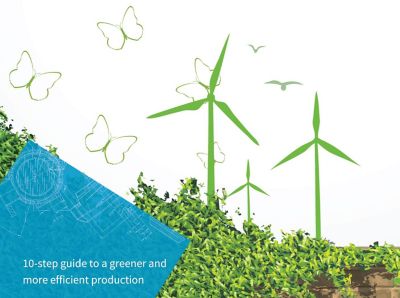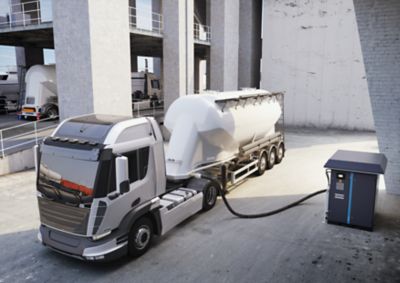Understanding the technical aspects of absolute filtration
Realizing absolute Class 0 filtration for particles
In the ever-evolving field of industrial processes, filtration plays a crucial role in ensuring the efficiency and safety of operations. This article addresses different parts of filtration technology. It covers its uses and how it achieves high-quality filtration.
Types of filtration
Several types of filtration methods are suited for different applications
- Mechanical filtration
Uses a physical barrier to remove particles from a fluid. Common examples include sieves and strainers - Chemical filtration
Involves the use of chemical reactions to remove impurities, often used in water treatment processes - Biological filtration
Utilizes biological processes to break down contaminants, commonly used in wastewater treatment
Key components of a filtration system
A typical filtration system comprises several key components
- Filter medium
The material that captures the solid particles, made of various materials including paper, cloth, or synthetic fibres - Filter housing
The structure that holds the filter medium in place and directs the flow of fluid through the filter - Pumps and valves
Control the flow and pressure of the fluid being filtered
Applications of filtration
Filtration technology has diverse applications
Water treatment
Removes contaminants from water, making it safe for drinking and industrial use
Food and Beverage industry
Removes impurities from products like beer, wine, and juice. This ensures they meet quality standards.
Air purification
HVAC systems use filters to remove dust, pollen, and other particles from the air. This helps improve indoor air quality.
When air is compressed the concentration of particles only increases so the need for filtration becomes only bigger with increasing pressure.
Understanding filtration mechanisms: A deep dive into compressed air filtration
Compressed air is important in many industrial processes. However, it often has contaminants like dust and oil aerosols. These impurities can originate from intake air, installation contaminants, and the lubrication of the compressor element. To ensure clean and efficient compressed air, technicians install one or more filters after the compressor.
The basics of filtration
Filtration is essential for removing particles from the compressor air flow. Inside these filters, there are multiple layers of thin fibres. These layers create multiple capturing points, increasing the particle capacity of these so-called depth filters.
How do depth filters work?
Many people think that filters work like sieves. They hold back particles that are larger than the filter's pores. However, this is a misconception. Dust particles in compressed air vary in size and are often much smaller than the media pores of the filters they are captured with.
Besides sieving, three different filtration mechanisms are at work, each responsible for capturing particles of a particular size
Inertial Impaction
Occurs when unclean air flows through the filter media. Heavier particles, because of their large inertia, do not follow the gas flow streamlines. Instead, they follow a straight path and collide with a fiber, which removes them from the air. Impaction becomes more important with increasing particle size
Interception
Involves particles of a somewhat smaller size. These particles are light enough to follow the streamline. However, if the radius is larger than the distance to the edge, the particle hits the fiber. When this happens, it gets stuck and is removed from the air. Interception gains importance with increasing particle size
Diffusion
Takes care of the smallest particles. These small particles do not follow the streamlines exactly. They move randomly because they collide with gas molecules. This movement is called Brownian motion. Because of this erratic movement, they are bound to collide with a fiber. The smaller a particle is, the more it can move freely. This also means it is more likely to meet a fiber. Captured by diffusion becomes more important with decreasing particle size
The total filter efficiency is a result of the combination of these three filtration mechanisms. They are particularly good at retaining larger particles and, counterintuitively, smaller particles as well. This leaves a "weakest point" of filtration known as the MPPS point – Most Penetrated Particle Size.
Reaching the highest air quality- Class 0 with membrane filters
For the highest air quality applications, a final filter is placed behind these depth filters overlapping the MPPS point. This final filter is usually a membrane filter. It works better because it has multiple very small pores. This filter effectively stops particles, including bacterial and viral contaminants, but has a limited contaminant holding capacity.
Any particle larger than the pore size will block a flow path. This will quickly increase the pressure drop, much faster than a depth filter. Having an upstream depth filter is a better way to catch most particles. This helps reduce pressure build-up in the final filter. As a result, it creates a more efficient solution for pressure drop.
With a membrane final filter, it is possible to reach an efficiency close to 100%, even at the MPPS point of the depth filter. The combination of a depth and membrane filter gives the best filter performance. This includes both filtration efficiency and dust holding capacity. It works well for all sizes of contaminants and particles.
Absolute Class 0 filtration
Final filtration is a critical step in many industrial processes, particularly in the pharmaceutical, food and beverage, cosmetics, electronics and battery industries.
It involves removing any leftover contaminants and it avoids them contaminating the end product. This is key to avoid recalls of whole badges.
For these key applications the good practice is to work with absolute filtration to bring the risk of a breakthrough to an absolute minimum.
Conclusion
It is important to understand the diverse ways to filter air and the parts used in compressed air filtration. This helps to select the right solution for your requirements and maintain high air quality.
By using depth filters and membrane filters together, we can reach the highest air quality levels. This ensures safe, reliable, and efficient operations for even the most challenging applications.

